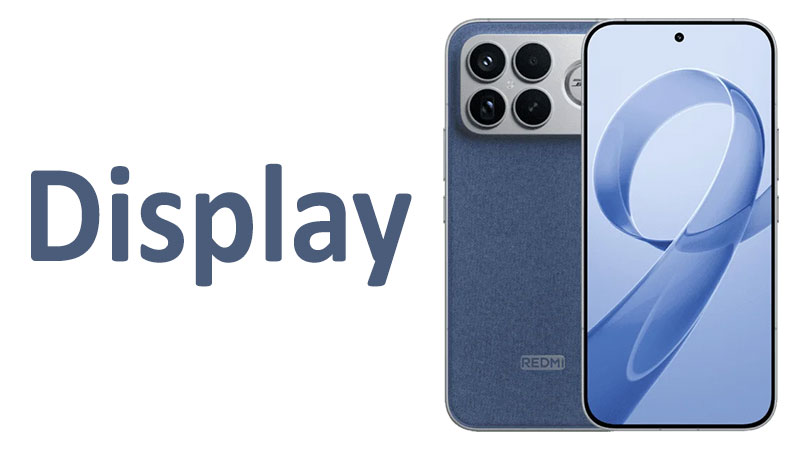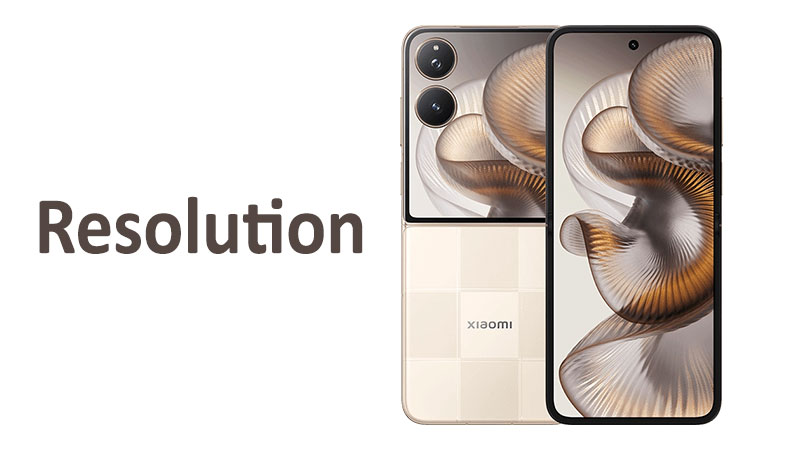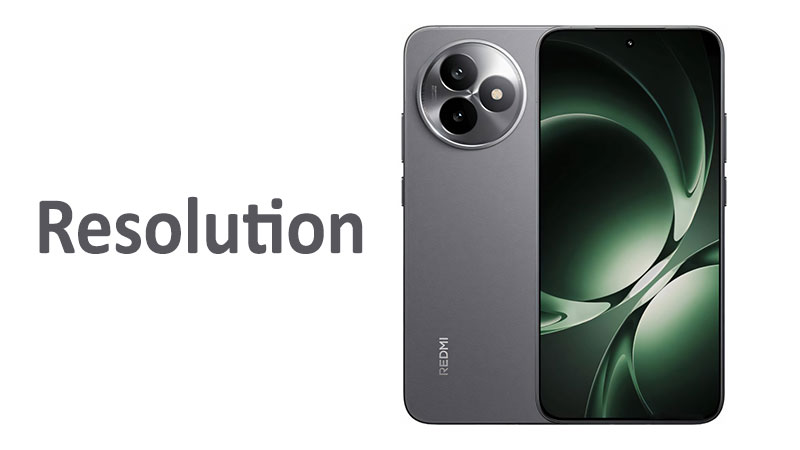The Xiaomi Redmi K90 Pro Max display sets a new benchmark for flagship smartphones. This powerful component is crucial for the entire user experience. It determines everything from gaming fidelity to daily text readability. Choosing a modern premium phone often boils down to the screen quality. Therefore, a thorough review of the Xiaomi Redmi K90 Pro Max display is essential for any potential buyer. We will explore the specialized LTPO AMOLED panel, the extreme 3500 nits brightness, and the advanced eye protection features. This detailed analysis will help you understand why this screen stands out in the competitive mobile market.
Display Technology Deep Dive: Understanding the Panel
The K90 Pro Max utilizes cutting-edge display technology. It is not simply an iteration of older screens. This new panel integrates several sophisticated features simultaneously. These features combine to offer a viewing experience unlike any other. We will examine the core components that make this screen exceptional.
LTPO AMOLED Technology: Efficiency Meets Excellence
The Xiaomi Redmi K90 Pro Max display features an advanced LTPO AMOLED panel. LTPO stands for Low-Temperature Polycrystalline Oxide. This is a crucial element for modern adaptive refresh rates. It allows the display to change its refresh rate dynamically. For instance, the screen can drop to 1Hz when viewing a static image. It can ramp up to 120Hz for seamless scrolling or gaming. This dynamic adjustment leads to substantial power savings. Previous generations often used standard AMOLED technology. Standard AMOLED is limited to fixed refresh rate steps, such as 60Hz or 120Hz. LTPO technology provides superior battery management. It ensures that the high-refresh-rate experience does not drain the battery quickly. This is a massive advantage for users who rely on their phone all day.
Color Fidelity: The Power of 68 Billion Colors
The K90 Pro Max supports a staggering 68 billion colors. This is often described as 12-bit color depth. Most flagship phones offer 10-bit color, which represents 1.07 billion colors. The jump to 12-bit allows for much smoother color gradients. This change is vital for professional photo editing and high-end media consumption. Users will notice a near-perfect transition between shades. Banding, the visible lines between color steps, is virtually eliminated. Therefore, images and videos appear richer and more true-to-life. The 68 billion colors capability ensures excellent fidelity for all content. It provides an unmatched visual experience for critical users.
High-Frequency PWM Dimming: Protecting User Eyes
The display incorporates 2560Hz Pulse Width Modulation, or PWM, dimming. This is a specialized feature focused on eye comfort. AMOLED screens dim by rapidly turning the pixels on and off. Lower PWM frequencies, like 480Hz or 960Hz, can cause visible flicker for sensitive users. This flicker leads to eye strain, headaches, and fatigue, especially in low light. The 2560Hz PWM frequency is exceptionally high. This dramatically reduces the perceived flicker. It makes the screen much more comfortable for long-term use. Consequently, the Xiaomi Redmi K90 Pro Max display is a strong choice for people sensitive to flicker. This high frequency technology demonstrates Xiaomi’s commitment to user health and comfort. It gives the K90 Pro Max an edge over many competitors still using lower PWM rates.
Performance and Visual Fidelity: Brightness and HDR
Display performance goes beyond basic technology. It relies on how bright the screen gets and its ability to handle demanding video content. The K90 Pro Max offers exceptional numbers in these critical areas. These specifications cement its status as a top-tier media device.
Refresh Rate: Smoothness and Adaptive Sync
The native 120Hz refresh rate delivers silky-smooth motion. Scrolling through social media feeds feels instantaneous. Gaming performance benefits tremendously from this high speed. The screen updates 120 times every second. This reduces motion blur significantly. Furthermore, the underlying LTPO technology makes this 120Hz refresh rate adaptive. The system dynamically adjusts the rate based on the on-screen content. For instance, if you are watching a 24 frames per second movie, the display can match that rate. This prevents unnecessary battery drain while maintaining perfect smoothness when needed. The combination of a high maximum rate and adaptive sync provides an ideal balance of performance and efficiency. It is a necessary feature for any current flagship phone.
Peak Brightness: Extreme 3500 Nits
The Xiaomi Redmi K90 Pro Max display boasts an astonishing 3500 nits of peak brightness. This figure is extremely high. It rivals dedicated professional monitors and televisions. High peak brightness is essential for two main reasons. First, it ensures excellent outdoor visibility. Even under bright sunlight, the screen remains perfectly readable. Second, it is crucial for displaying High Dynamic Range (HDR) content. HDR requires bright highlights and deep shadows. The 3500 nits allows small areas of the screen to shine intensely. This makes HDR scenes pop with realistic depth and contrast. Many flagship competitors only reach 2500 nits or lower. Therefore, the K90 Pro Max display offers superior performance in extreme lighting conditions. This peak brightness capability is a major selling point for media enthusiasts.
HDR Standards Support: Unlocking Cinematic Content
The K90 Pro Max supports a comprehensive array of HDR formats. It includes Dolby Vision, HDR Vivid, and HDR10+. This extensive support is crucial for streaming services. Different services use different HDR standards. For example, Netflix often uses Dolby Vision. Amazon Prime Video favors HDR10+. HDR Vivid is common in certain Asian markets. By supporting all three major standards, the K90 Pro Max ensures maximum compatibility. Users can access the highest quality content regardless of the platform. Dolby Vision is particularly notable. It uses dynamic metadata to adjust brightness and color frame by frame. This results in the best possible picture quality. This wide support makes the K90 Pro Max a versatile cinematic powerhouse.
Size, Resolution, and Clarity: The Viewing Area
The physical dimensions and pixel arrangement define the immersion and sharpness of the viewing experience. The K90 Pro Max opts for a large, high-density screen. This creates an expansive, detailed visual workspace for users.
The Expansive 6.9-inch Canvas
The display measures a generous 6.9 inches diagonally. This large size is perfect for multitasking and media. It provides an immersive feel for watching movies and playing graphically intensive games. The screen-to-body ratio is excellent at approximately 91.8%. This high ratio means the bezels surrounding the display are exceptionally thin. Thin bezels contribute significantly to the phone’s modern, sleek aesthetic. They ensure that almost the entire front face is dedicated to content. However, a 6.9-inch screen also impacts one-handed use. Users with smaller hands might find the device challenging to manipulate easily. Despite this, the expansive screen size remains a huge draw for most flagship buyers. It transforms the phone into a pocket-sized tablet.
Resolution and Pixel Density: Sharpness and Detail
The display resolution is 1200 x 2608 pixels. This creates a sharpness of approximately 416 pixels per inch (ppi). A density of 416 ppi is considered extremely sharp. Individual pixels are indistinguishable to the human eye at normal viewing distances. Text is rendered crisply and images show fine detail. This resolution balances sharpness with power consumption very well. While some competitors use QHD+ (e.g., 1440p) resolutions, 1200p is a smart choice. Higher resolutions like 1440p offer minimal visible improvement on a phone screen. Conversely, they require significantly more power from the battery and processor. The 1200 x 2608 pixel resolution provides a sweet spot. It delivers superb clarity without undue battery drain. This efficiency is a key benefit of the K90 Pro Max display specification.
Aspect Ratio for Media: 19.5:9 Format
The screen uses a 19.5:9 aspect ratio. This format is tall and relatively narrow. It is a common standard for modern smartphone displays. This elongated shape makes it ideal for scrolling through long web pages. It also provides more screen real estate for two applications running simultaneously in split-screen mode. When watching movies, the 19.5:9 ratio is close to cinematic formats. This minimizes the black bars above and below the content. The taller screen enhances the immersive feeling during video playback. It is a practical aspect ratio for both productivity and entertainment purposes.
Durability and Protection: Shielding the Investment
A stunning display is only valuable if it can withstand the rigors of daily life. The K90 Pro Max addresses this concern with advanced protective technology. Xiaomi has developed its own solution for screen protection.
Xiaomi Dragon Crystal Glass: Proprietary Strength
The display is protected by Xiaomi Dragon Crystal Glass. This is Xiaomi’s proprietary toughened glass technology. It is designed to rival or exceed the scratch and drop resistance of competing glass solutions, like Gorilla Glass Victus or Armor. The development of an in-house protection glass allows Xiaomi greater control over its durability profile. Dragon Crystal Glass is engineered to resist deep scratches from keys and coins. Furthermore, it is designed to survive drops onto hard surfaces. The curved edges of the glass likely meet the phone frame seamlessly. This improves both the feel and the overall drop protection. This robust protection is a significant factor for buyers. It provides peace of mind regarding the phone’s longevity.
Design and Aesthetics: Bezel Integration
Beyond the glass itself, the physical integration of the display is key. The thin bezels contribute to the flagship appearance. The screen likely features a subtle curve at the edges. This design improves swipe gestures and adds a premium feel. The punch-hole cut-out for the selfie camera is expected to be minimal. This ensures that the display remains mostly uninterrupted. The high screen-to-body ratio is a testament to sophisticated engineering. The overall design language maximizes the display area. This makes the phone look modern and highly immersive.
Specialized Comparisons and Market Positioning
To fully appreciate the K90 Pro Max display, we must place it in context. Comparing it to its predecessor and current competitors highlights its advancements. These comparisons reveal where the K90 Pro Max truly excels.
K90 Pro Max vs. Predecessor Display (Hypothetical K80 Pro Max)
The previous generation, hypothetically the K80 Pro Max, likely used a standard AMOLED or an older LTPO panel. The K90 Pro Max marks several key generational leaps. The brightness is the most significant improvement. Older flagships often topped out around 1500 to 2000 nits. The jump to 3500 nits represents a massive increase in outdoor and HDR performance. Secondly, the integration of 12-bit color (68 billion colors) is also a major step up. The predecessor probably used 10-bit color. The new panel offers superior color accuracy and gradient rendering. Finally, the introduction of 2560Hz PWM dimming is a huge user experience enhancement. Older phones often used lower PWM rates, increasing eye strain. This comparison shows that the K90 Pro Max display is a radical, not incremental, upgrade.
K90 Pro Max vs. Key Competitors (Samsung and Apple)
The K90 Pro Max directly challenges the displays of the top competitors. Samsung and Apple models typically offer excellent displays. The K90 Pro Max outperforms them in two key areas. The 3500 nits peak brightness is currently among the highest in the industry. It surpasses the peak brightness figures of most non-Xiaomi flagships. Furthermore, the 2560Hz PWM dimming is a competitive advantage. Major competitors often rely on lower PWM rates. This makes the K90 Pro Max display more comfortable for users who spend many hours on their devices. However, some competitors offer higher QHD+ resolutions. The K90 Pro Max’s 1200p resolution might be seen as a minor drawback by some. Overall, the combination of extreme brightness and advanced eye comfort technology sets the K90 Pro Max apart.
Pros and Cons of the Display: A Balanced View
Understanding the full picture requires a look at both the advantages and potential disadvantages. The K90 Pro Max display offers many features to praise. However, a few drawbacks are inherent to the technology and size.
Advantages for the User
The screen provides several compelling reasons for purchase. The extreme 3500 nits brightness guarantees unmatched outdoor performance. High Dynamic Range content truly shines on this screen. The 12-bit color depth ensures industry-leading color reproduction. Gradients are smooth and free of banding artifacts. The 2560Hz PWM dimming drastically reduces eye fatigue. This makes the phone usable for long reading or scrolling sessions. The LTPO 120Hz refresh rate delivers fluid motion. This performance comes with smart power efficiency. The 6.9-inch size provides an immersive experience for movies and gaming. This display is a visual powerhouse across all metrics. It represents the pinnacle of current mobile display technology.
Drawbacks to Consider
There are a few points where the display may not satisfy every user. First, the 6.9-inch size is large. This makes the phone bulky and potentially difficult for single-handed operation. Users prioritizing portability might find it too cumbersome. Second, the resolution is 1200p, not 1440p (QHD+). While the difference is minor, some users prefer the highest possible pixel count. This might be a limiting factor for VR use, though phone VR is less common now. Finally, the power consumption, even with LTPO, is still a consideration. Driving a 6.9-inch, 120Hz, high-brightness panel requires a large battery capacity. Despite the efficiency features, intense usage will still consume power quickly. These are minor trade-offs for such a high-performance screen.
Essential Buyer Information: Key Decision Points
Potential buyers should focus on how these technical specifications translate into real-world use. The decision to purchase should align with the user’s primary needs. The K90 Pro Max display excels in several specific scenarios.
Key Decision Points for Consumers
Movie enthusiasts and gamers will find the display superb. The combination of Dolby Vision, 3500 nits, and the large 6.9-inch size is ideal. It creates a truly cinematic handheld device. Professional users and outdoor workers will appreciate the brightness. The 3500 nits make the screen perfectly legible in any lighting condition. Users with light sensitivity should strongly consider this phone. The 2560Hz PWM dimming offers unparalleled eye comfort compared to many alternatives. Conversely, those seeking a very small, pocketable phone might look elsewhere. Buyers must prioritize large screen immersion over compact size. The display’s overall quality elevates the phone beyond its competition.
Optimizing Display Settings
Users can further customize their viewing experience. The phone will offer several color modes. These modes usually include a vivid or saturated option. They also offer a natural or sRGB-accurate setting. Choosing the natural profile is best for photo editing. It ensures accurate color representation. The vivid mode enhances media consumption for punchier colors. Users can also manage the refresh rate. While the adaptive LTPO setting is best for battery life, some may prefer a fixed 120Hz for consistent performance. Xiaomi often includes DC Dimming as an option in its settings. If available, users sensitive to PWM may toggle this feature. This allows the user to fine-tune the display perfectly.
Final Summary and Verdict
The Xiaomi Redmi K90 Pro Max display is undoubtedly one of the best available in the smartphone market. It combines top-tier performance with advanced user-centric features. The core LTPO AMOLED technology provides a smooth and efficient 120Hz experience. Furthermore, the immense 3500 nits of peak brightness ensures fantastic HDR performance and excellent outdoor visibility. The comprehensive support for Dolby Vision, HDR Vivid, and HDR10+ guarantees future-proof media consumption.
Most importantly, the display addresses a common health concern with its 2560Hz PWM dimming. This dramatically reduces eye strain for all users. The only minor trade-offs are the phone’s large 6.9-inch size and the 1200p resolution instead of 1440p. For the majority of consumers, these are insignificant compromises. The protective Dragon Crystal Glass provides necessary durability. The Xiaomi Redmi K90 Pro Max display is highly recommended. It is a fantastic choice for anyone prioritizing an elite visual and comfortable user experience. This display defines the phone’s premium status.
Frequently Asked Questions
What kind of screen protection does the K90 Pro Max use?
The Xiaomi Redmi K90 Pro Max display is protected by Xiaomi Dragon Crystal Glass. This is Xiaomi’s proprietary, toughened glass solution. It offers superior scratch and drop resistance.
Is the Xiaomi Redmi K90 Pro Max display good for eyes?
Yes, the display is excellent for eye comfort. It uses a high 2560Hz Pulse Width Modulation (PWM) dimming frequency. This high frequency drastically reduces screen flicker.
What is the peak brightness of the K90 Pro Max display?
The Xiaomi Redmi K90 Pro Max display achieves an industry-leading peak brightness of 3500 nits. This provides outstanding visibility in bright sunlight and powerful HDR effects.
Does the screen support Dolby Vision?
Yes, the display fully supports several advanced HDR formats. These include Dolby Vision, HDR Vivid, and HDR10+. This ensures top-tier quality for streaming content.
Is the refresh rate always 120Hz?
No, the display uses LTPO AMOLED technology. This allows the 120Hz refresh rate to adapt dynamically. It scales down to save power when necessary.



